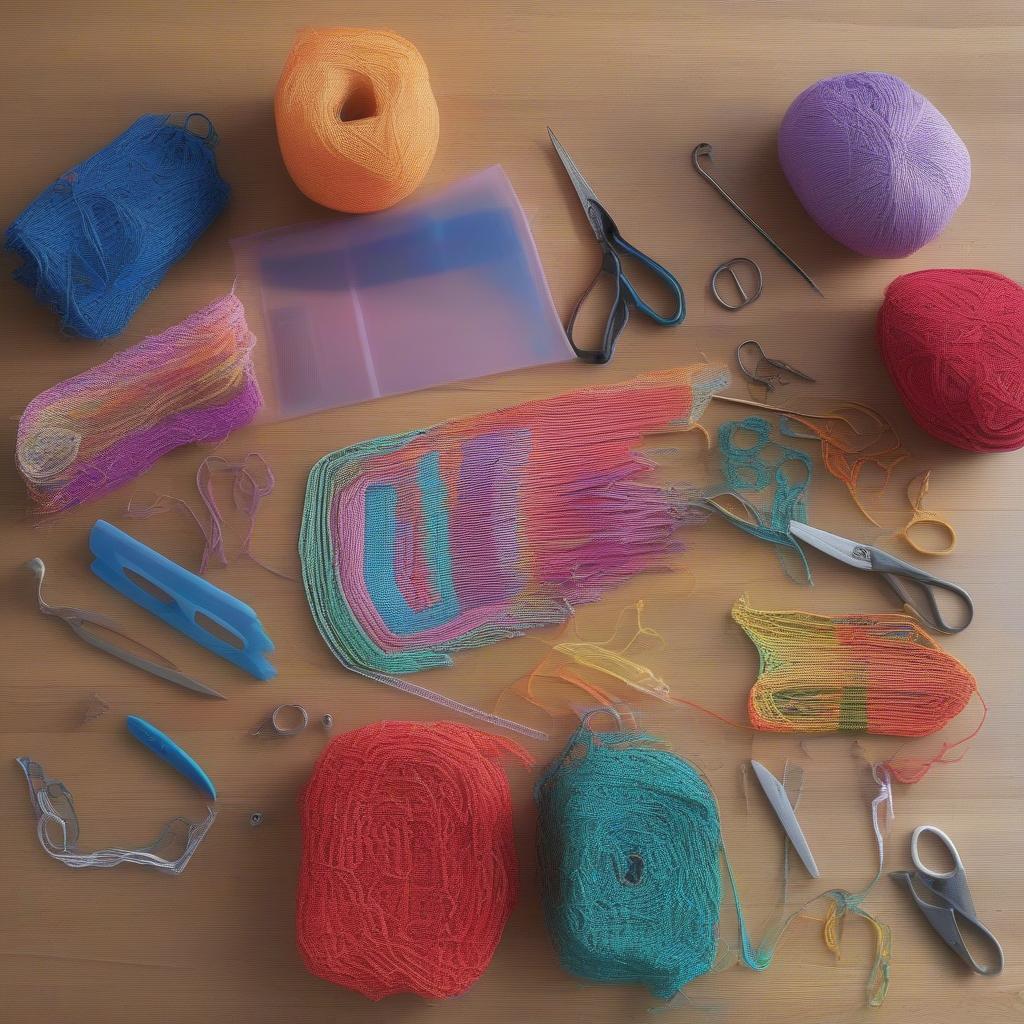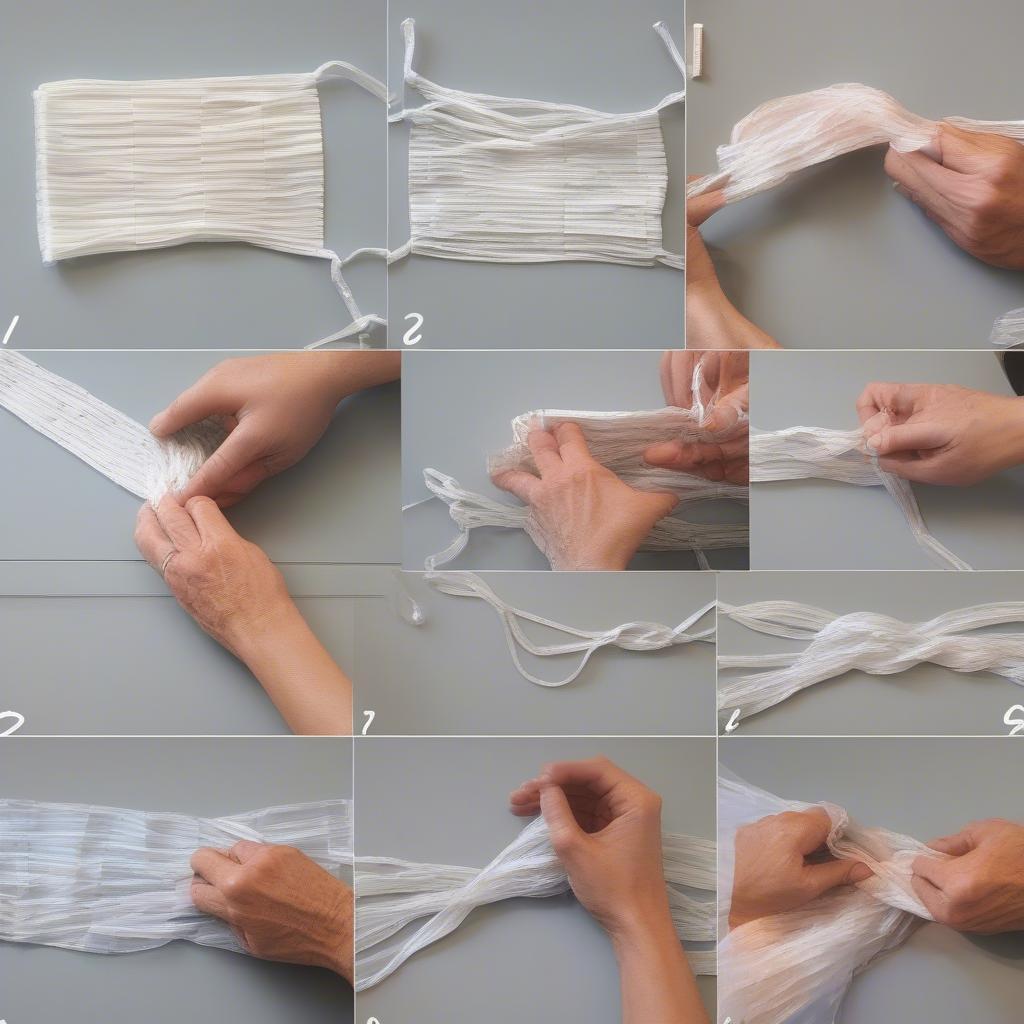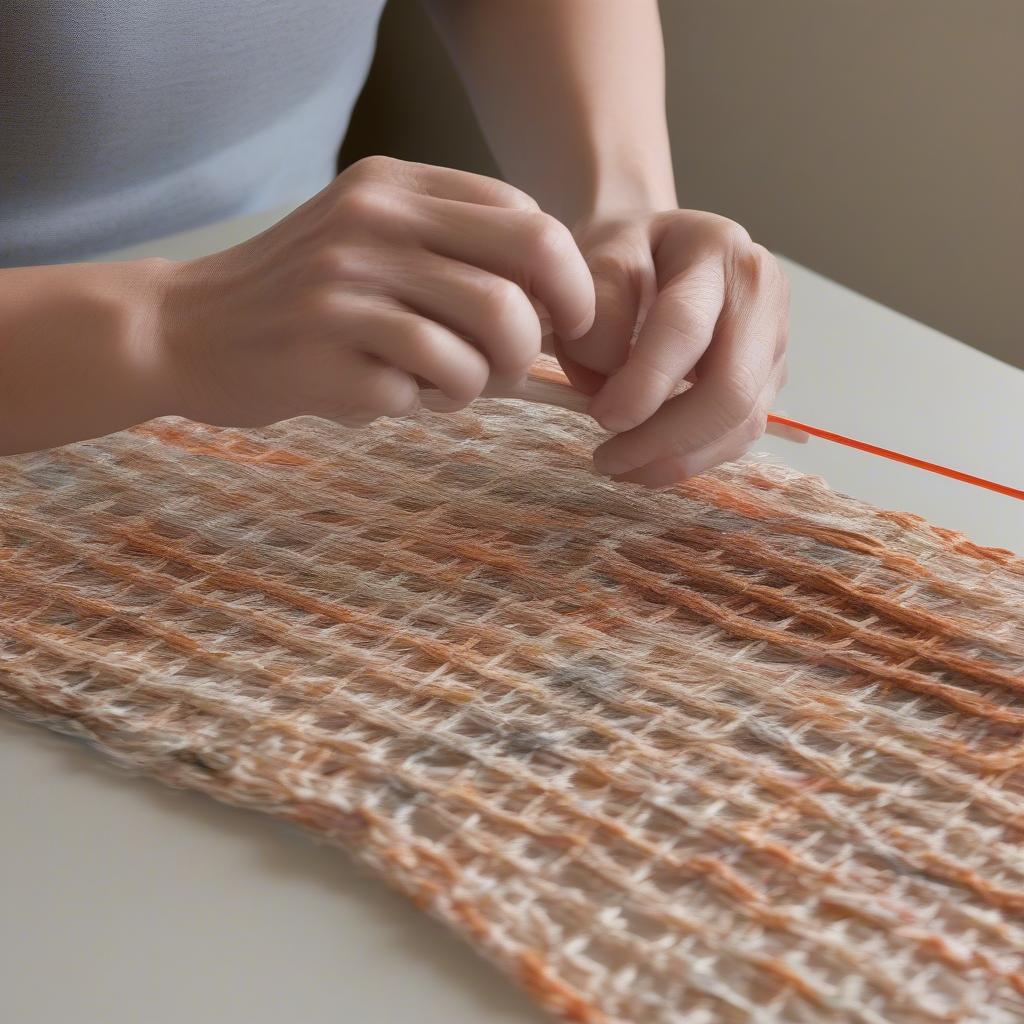Basket Weaving
How to Weave a Plastic Bag Carpet
Creating a durable and unique rug from discarded plastic bags is a rewarding upcycling project. This guide provides a comprehensive look at how to weave a plastic bag carpet, transforming everyday waste into a functional piece of art.
Gathering Your Materials: Weaving Prep 101
Before diving into the weaving process, you’ll need to gather your materials. This includes plastic bags (lots of them!), scissors, a sturdy cardboard loom (optional, but helpful for beginners), and a crochet hook or large darning needle. The beauty of this project lies in its simplicity – the tools are common household items, making it accessible to everyone.
 Plastic bag rug weaving materials: bags, scissors, cardboard loom, crochet hook
Plastic bag rug weaving materials: bags, scissors, cardboard loom, crochet hook
Preparing the “Plarn”: Making Plastic Yarn
The key to a successful plastic bag carpet is “plarn,” or plastic yarn. Creating plarn involves cutting plastic bags into strips and then linking these strips together. Fold your bag several times lengthwise, and then cut off the sealed bottom and the handles. Cut the remaining folded section horizontally into strips about 1-2 inches wide. Connect these strips by looping one through another and knotting them together to form a continuous length of plarn.
 Step-by-step guide on cutting and joining plastic bag strips to make plarn.
Step-by-step guide on cutting and joining plastic bag strips to make plarn.
Weaving Your Carpet: Different Techniques to Try
There are several methods for weaving a plastic bag carpet. A simple method is using a cardboard loom. Cut notches along the top and bottom edges of your cardboard. Wrap your plarn around the notches, creating the warp for your rug. Then, using a crochet hook or darning needle, weave additional plarn through the warp, creating the weft. You can also braid or crochet your plarn into a rug. Braiding creates a thicker, more textured rug, while crocheting allows for more intricate patterns.
 Weaving plarn through cardboard loom to create a plastic bag rug.
Weaving plarn through cardboard loom to create a plastic bag rug.
Tips for a Successful Project: Plarn Weaving Wisdom
- Consistent Plarn Width: Aim for consistent width when cutting your plarn strips. This ensures a more even and professional-looking finished product.
- Color Coordination: Consider the colors of your plastic bags and plan how you want to incorporate them into your design. You can create stripes, patterns, or even a gradient effect.
- Tight Weaving: Maintain a consistent tension while weaving to create a dense and durable rug. A loose weave can result in a flimsy and less practical rug.
- Experiment with Textures: Don’t be afraid to experiment with different weaving techniques and plarn thicknesses to create unique textures and visual interest.
“The beauty of working with plarn is its versatility. You can create anything from simple rugs to intricate wall hangings, all while contributing to a more sustainable future.” – Jane Doe, Sustainable Crafts Expert
“Working with recycled materials like plastic bags not only reduces waste but also empowers individuals to create beautiful and functional items with their own hands.” – John Smith, Upcycling Advocate
Conclusion: Your New Eco-Friendly Rug
Creating a plastic bag carpet is a simple yet effective way to upcycle plastic waste. This guide has provided you with the steps and tips needed to transform your discarded plastic bags into a beautiful and functional piece of art. So gather your materials and start weaving your own how to weave a plastic bag carpet today!
FAQ
- How many plastic bags do I need for a small rug? Approximately 50-100 bags, depending on the rug’s size and the thickness of the plarn.
- Can I wash my plastic bag rug? Yes, you can hand wash it with mild soap and water.
- What other items can I make with plarn? Bags, placemats, coasters, and even tote bags.
- Is plarn durable? Yes, when woven tightly, plarn creates a surprisingly strong and durable material.
- Where can I find more plastic bags if I don’t have enough? Ask friends, family, or local businesses if they have any spare bags they’d be willing to donate.
Common Scenarios and Questions
- My rug is curling at the edges. This can happen if the tension isn’t consistent throughout the weaving process. Try to maintain even tension as you weave.
- My plarn keeps breaking. Ensure you’re not pulling the plarn too tight when knotting the strips together.
- I want to make a larger rug, but my cardboard loom is too small. You can create multiple smaller rugs and then stitch them together to create a larger one.
Related Articles
- Upcycling Ideas for Plastic Bottles
- Creating a Sustainable Home
- DIY Eco-Friendly Crafts
Need assistance? Contact our Hotline: +84 388 951 999, or visit us at Hanoi, Vietnam, or Tech Avenue, Suite 12, San Francisco, CA 94105, USA. Our customer service team is available 24/7.
